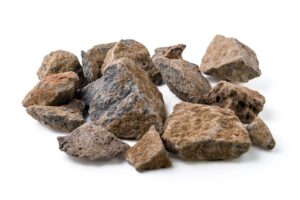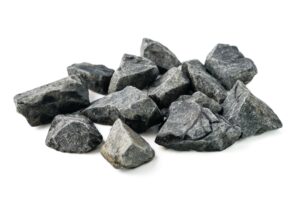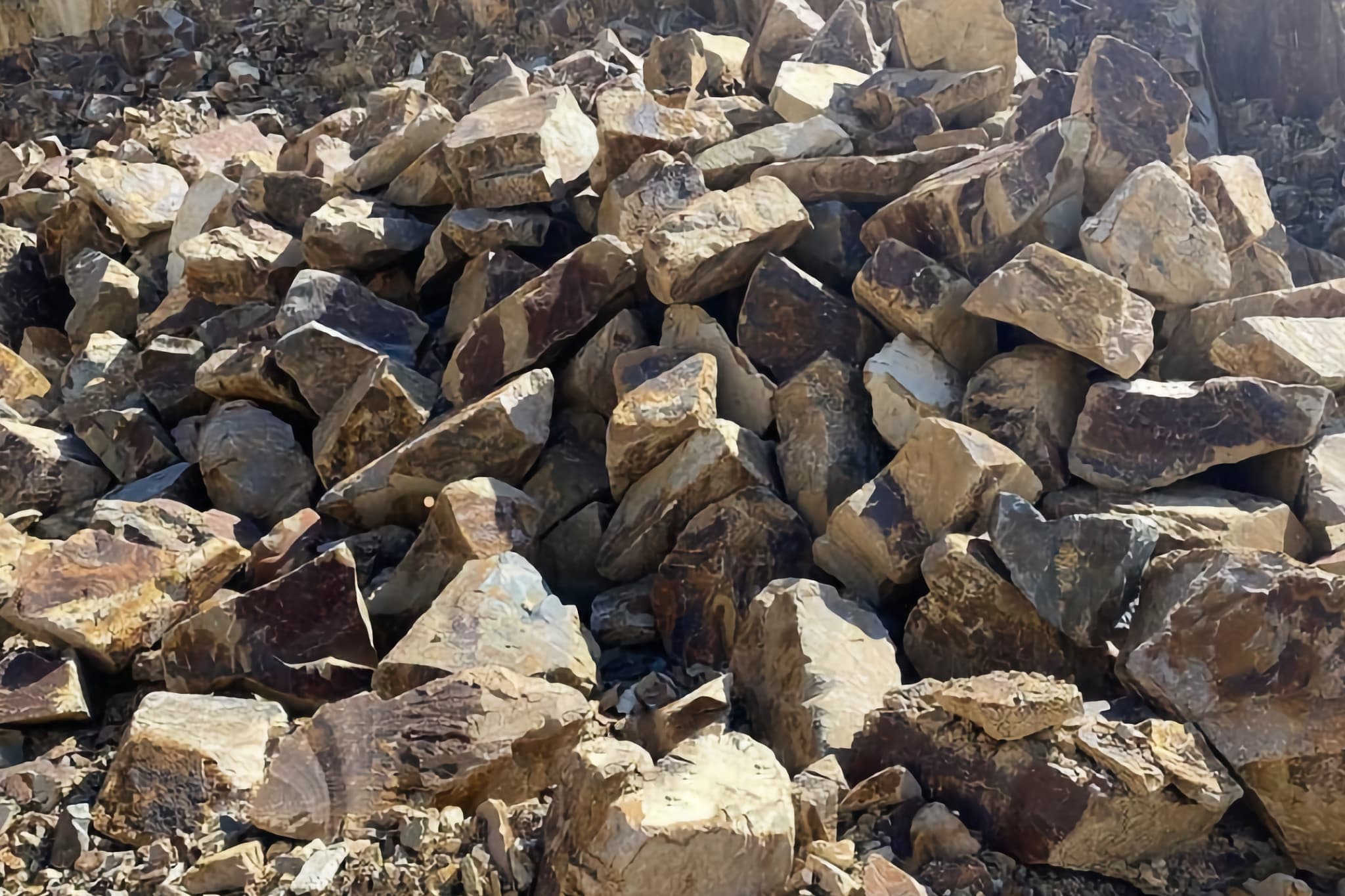Spalls are the broken or chipped fragments of rock or concrete that result from the crushing process of larger materials. These fragments manifest in a wide array of sizes and shapes, often characterized by irregular and non-uniform pieces.
Applications
Applications of Spalls: Enhancing Various Projects
Road Construction Support: Spalls prove invaluable as base or subbase materials in road construction, delivering essential stability and load distribution to roadways.
Haul Road Foundations: Utilized as a foundation layer for haul roads, spalls ensure stability and load-bearing capacity, enabling these roads to withstand the heavy loads of mining trucks, construction equipment, and other vehicles.
Erosion Control: Spalls are deployed in erosion control initiatives, effectively stabilizing slopes, embankments, and areas prone to soil erosion.
Landscape Enhancement: In landscaping ventures, spalls serve decorative purposes, creating enchanting pathways or delineating garden borders.
Concrete Reinforcement: Crushed spalls contribute as aggregates in concrete production, bolstering the strength and durability of the concrete.
Foundation Support: Spalls function as foundational fill materials, offering stability and support for building foundations.
Retaining Wall Backfill: Spalls enhance stability and drainage and are employed as backfill material for retaining walls.
Bulk Fill Applications: In select construction projects, spalls are vital in bulk fill applications, laying the groundwork for stable structures and foundations.
Benefits
Benefits of Spalls in Construction and Landscaping Projects:
Versatility: Spalls offer a broad spectrum of applications in construction and engineering, providing project designers with flexibility and adaptability in their execution.
Stability: Their innate stability and load-bearing capacity make spalls dependable for supporting critical elements like roads, structures, and erosion control measures.
Erosion Prevention: Spalls are instrumental in erosion control projects, effectively stabilising slopes, embankments, and areas vulnerable to soil erosion, preserving the integrity of landscapes.
Efficient Drainage: The irregular shape of spalls facilitates efficient water drainage, mitigating the risk of water accumulation and potential damage to projects.
Customisation: Available in diverse sizes and shapes, spalls can be tailored to meet precise project requirements, enhancing their suitability for various applications.
Sustainability: Incorporating spalls into construction practices promotes sustainability by repurposing materials that might otherwise be deemed waste, contributing to responsible resource management.
Local Sourcing: Spalls are often locally sourced, reducing transportation distances and associated costs while supporting regional economies.
Reduced Environmental Impact: Employing recycled materials as spalls minimises the demand for new resource extraction, minimising environmental impact and fostering eco-conscious construction practices.
Engineering Control: Spalls can be designed to adhere to specific engineering specifications and standards, ensuring the integrity and safety of projects.
Products
More like this

Rubble (Various Sizes)
“Graded rubble” is a construction material made from fragmented stone or concrete, sorted by size. The rubble is meticulously sorted by size and categorized into distinct fractions, resulting in a well-structured mixture. This...

Ballast (Various Sizes)
Ballast is a dense mixture of gravel and sand which forms a rough, coarse aggregate used in an extensive range of construction applications. Aggregate ballast with a particle size of 40mm is a commonly used construction material that...

Case
studies

Normark
Established in 1977, Normark are a second generation family business specialising in landscape design and construction across Melbourne. "From inner-city Melbourne courtyards to large commercial open spaces, Normark will deliver."

Normark
Established in 1977, Normark are a second generation family business specialising in landscape design and construction across Melbourne. "From inner-city Melbourne courtyards to large commercial open spaces, Normark will deliver."

Normark
Established in 1977, Normark are a second generation family business specialising in landscape design and construction across Melbourne. "From inner-city Melbourne courtyards to large commercial open spaces, Normark will deliver."

Normark
Established in 1977, Normark are a second generation family business specialising in landscape design and construction across Melbourne. "From inner-city Melbourne courtyards to large commercial open spaces, Normark will deliver."

Normark
Established in 1977, Normark are a second generation family business specialising in landscape design and construction across Melbourne. "From inner-city Melbourne courtyards to large commercial open spaces, Normark will deliver."


